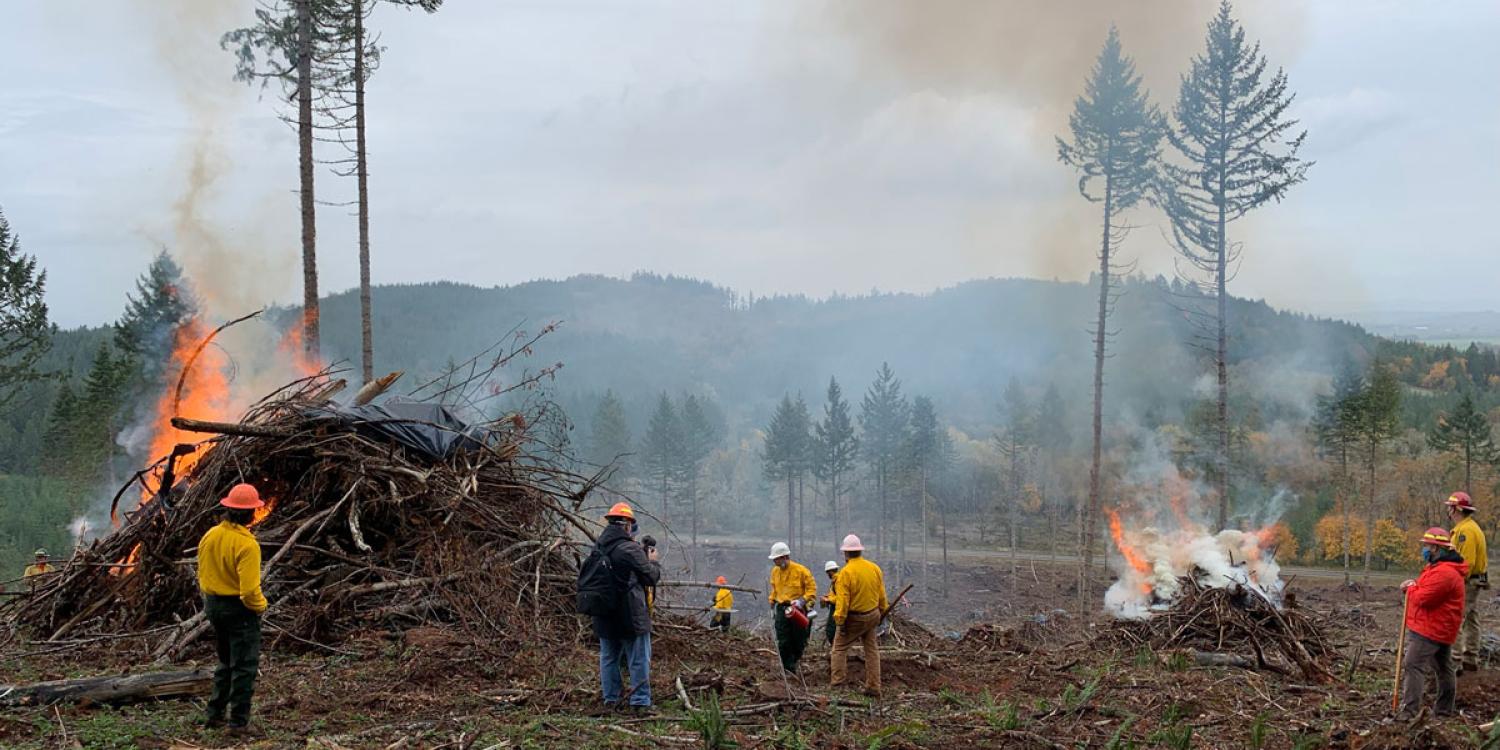
For thousands of years, fire supported environmental health in many parts of Oregon through both natural occurrences and cultural practices of Indigenous peoples. But after more than a century of fires being suppressed, Oregon’s landscapes have accumulated heavy amounts of fuel that are feeding wildfires. Coupled with a warmer and drier climate, wildfires are becoming larger and more prolonged. In addition to loss of property and life, these fires are contributing to a decline in the resilience of valuable landscapes.
Fire-adapted landscapes that are managed with prescribed burning have been shown to be more resilient to wildfires. Reinstating fire’s beneficial role is challenging, however, due to social and political resistance and inadequate resources.
In response, the Oregon State University Extension Service Fire Program, funded by the Oregon Legislature in 2019, has been facilitating partnerships to make landscapes more resilient to wildfire. One of most prominent requests heard by John Rizza, Extension regional fire specialist in northeast Oregon, is a critical need for more educational opportunities focused on using prescribed fire on appropriate land.
In Oregon, the National Resource Conservation Service lacked regionally specific training to teach their personnel to work with landowners to promote the safe and effective use of prescribed fire. To fill that need, Rizza and his team partnered with the Oregon Department of Forestry to develop a prescribed fire awareness training for conservation professionals. The goal is to help NRCS planners evaluate when to recommend prescribed fire as a conservation practice and provide them with the proper tools.
The outcome was a three-day event in fall 2021 that covered key topics, including reasons for prescribed fire, fire behavior, ignition, smoke management and more. Fifteen NRCS attendees participated, representing diverse ecological settings from Oregon’s northeastern Blue Mountains to the agricultural Willamette Valley. The networking opportunities were also valuable.
As a result of this event, landowners and managers have additional tools to help them implement diverse conservation practices that will help native ecosystems to be more resilient to wildfire and changes in climate. This awareness training also helped set the foundation for future opportunities to collectively promote prescribed fire implementation and provide a network that supports partners across the state.
In a post-training survey, 93% of participants indicated the training was “very” or “extremely useful” to the work they do. A month following the training, the number of planned prescribed burn acres has increased from a few hundred acres to nearly 10,000 acres.